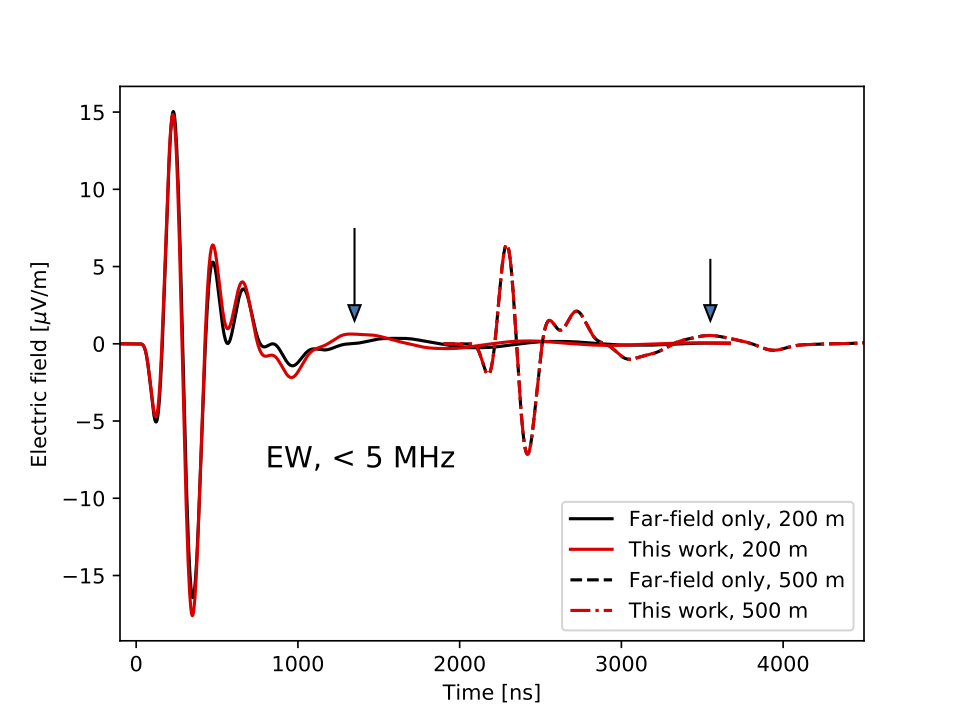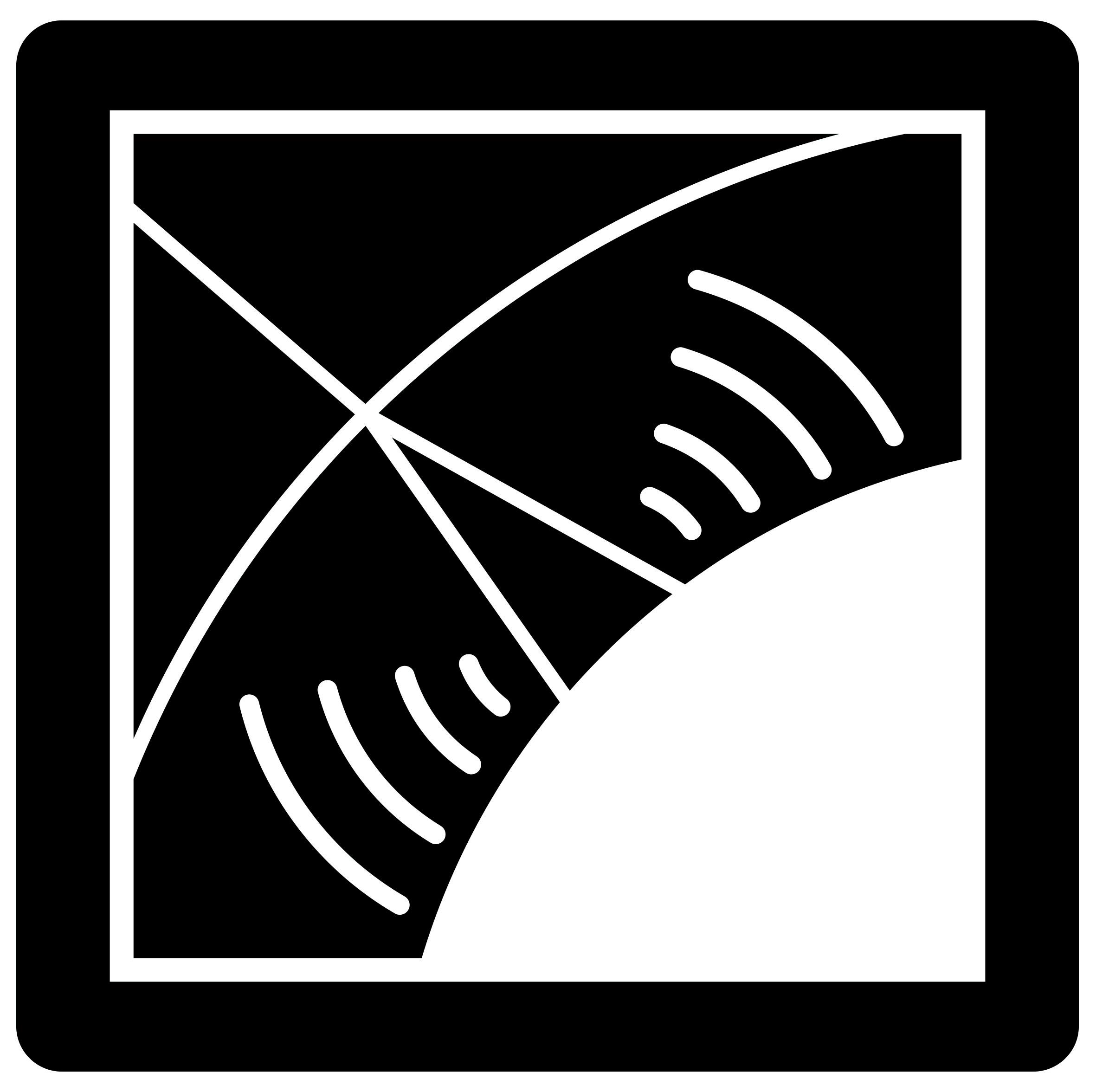Calculations of low-frequency radio emission by cosmic-ray-induced particle showers
The radio technique for the detection of high-energy cosmic rays consists in measuring the electric field created by the particle showers created inside a medium by the primary cosmic ray. The electric field is then used to infer the properties of the primary particle.
 Figure: electric field (5 MHz low-pass filter) as a function of time created by a 1 EeV proton-induced shower with 30° of zenithal angle and coming from the East (φ= 0°). Times have been arbitrarily offset. Traces have been numerically transformed to frequency, then filtered with a sixth order low-pass Butterworth filter and transformed back to time domain. This work’s formula (red lines) and the far-field approximation (ZHS, black lines) are plotted. Observers have been placed at 200 m (solid lines) and 500 m (dashed lines) east from the shower core. The sudden death field (indicated by the arrows) is visible after the principal pulse in each trace below 5 MHz.
Figure: electric field (5 MHz low-pass filter) as a function of time created by a 1 EeV proton-induced shower with 30° of zenithal angle and coming from the East (φ= 0°). Times have been arbitrarily offset. Traces have been numerically transformed to frequency, then filtered with a sixth order low-pass Butterworth filter and transformed back to time domain. This work’s formula (red lines) and the far-field approximation (ZHS, black lines) are plotted. Observers have been placed at 200 m (solid lines) and 500 m (dashed lines) east from the shower core. The sudden death field (indicated by the arrows) is visible after the principal pulse in each trace below 5 MHz.
Published by D. García-Fernández, B. Revenu, D. Charrier, R. Dallier, A. Escudié, L. Martin, in Physical Review D, Volume 97, May 2018, Issue 10, id.103010 https://doi.org/10.1103/PhysRevD.97.103010
